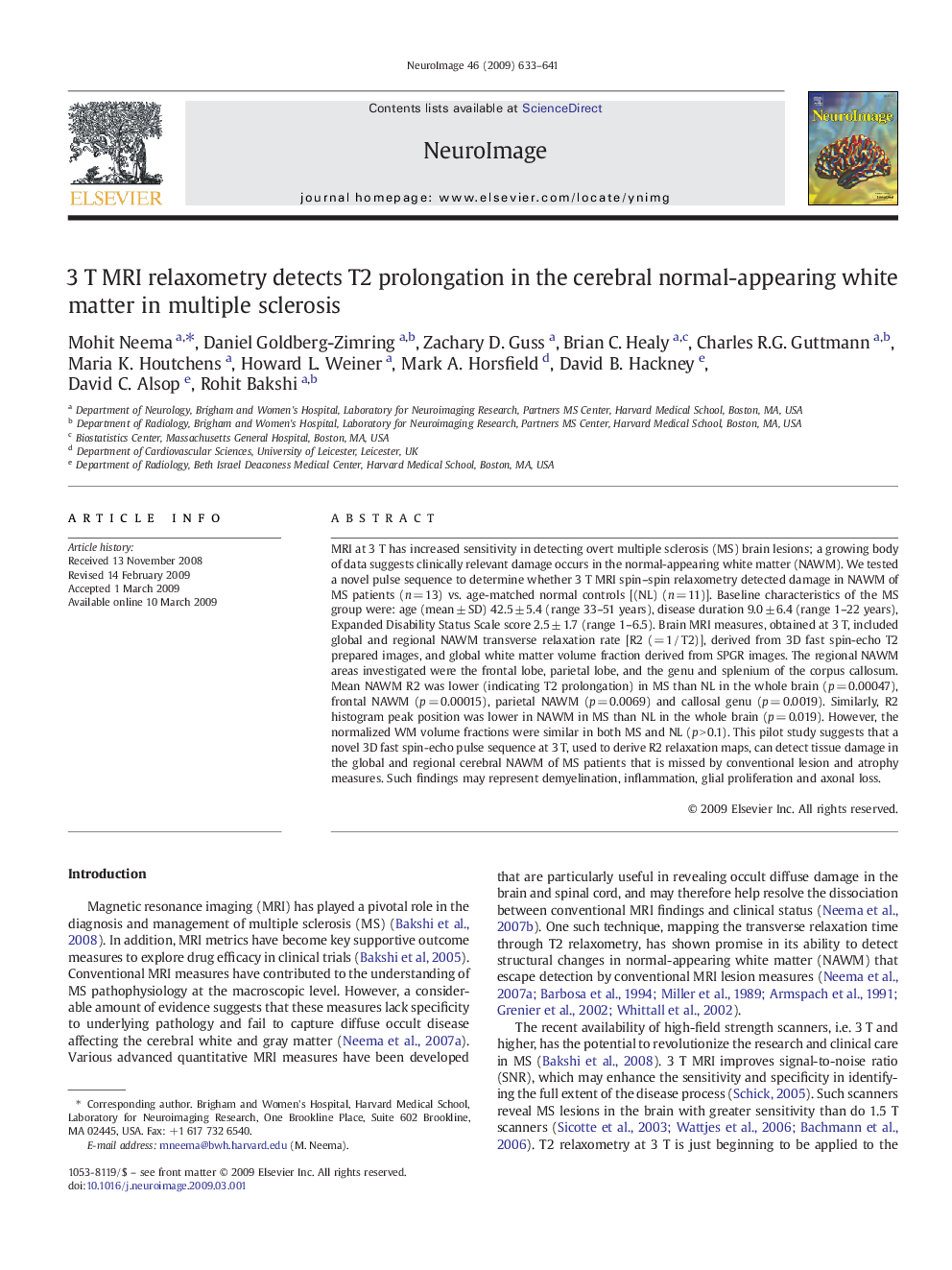| Article ID | Journal | Published Year | Pages | File Type |
|---|---|---|---|---|
| 6037848 | NeuroImage | 2009 | 9 Pages |
Abstract
MRI at 3 T has increased sensitivity in detecting overt multiple sclerosis (MS) brain lesions; a growing body of data suggests clinically relevant damage occurs in the normal-appearing white matter (NAWM). We tested a novel pulse sequence to determine whether 3 T MRI spin-spin relaxometry detected damage in NAWM of MS patients (n = 13) vs. age-matched normal controls [(NL) (n = 11)]. Baseline characteristics of the MS group were: age (mean ± SD) 42.5 ± 5.4 (range 33-51 years), disease duration 9.0 ± 6.4 (range 1-22 years), Expanded Disability Status Scale score 2.5 ± 1.7 (range 1-6.5). Brain MRI measures, obtained at 3 T, included global and regional NAWM transverse relaxation rate [R2 (= 1 / T2)], derived from 3D fast spin-echo T2 prepared images, and global white matter volume fraction derived from SPGR images. The regional NAWM areas investigated were the frontal lobe, parietal lobe, and the genu and splenium of the corpus callosum. Mean NAWM R2 was lower (indicating T2 prolongation) in MS than NL in the whole brain (p = 0.00047), frontal NAWM (p = 0.00015), parietal NAWM (p = 0.0069) and callosal genu (p = 0.0019). Similarly, R2 histogram peak position was lower in NAWM in MS than NL in the whole brain (p = 0.019). However, the normalized WM volume fractions were similar in both MS and NL (p > 0.1). This pilot study suggests that a novel 3D fast spin-echo pulse sequence at 3 T, used to derive R2 relaxation maps, can detect tissue damage in the global and regional cerebral NAWM of MS patients that is missed by conventional lesion and atrophy measures. Such findings may represent demyelination, inflammation, glial proliferation and axonal loss.
Related Topics
Life Sciences
Neuroscience
Cognitive Neuroscience
Authors
Mohit Neema, Daniel Goldberg-Zimring, Zachary D. Guss, Brian C. Healy, Charles R.G. Guttmann, Maria K. Houtchens, Howard L. Weiner, Mark A. Horsfield, David B. Hackney, David C. Alsop, Rohit Bakshi,
